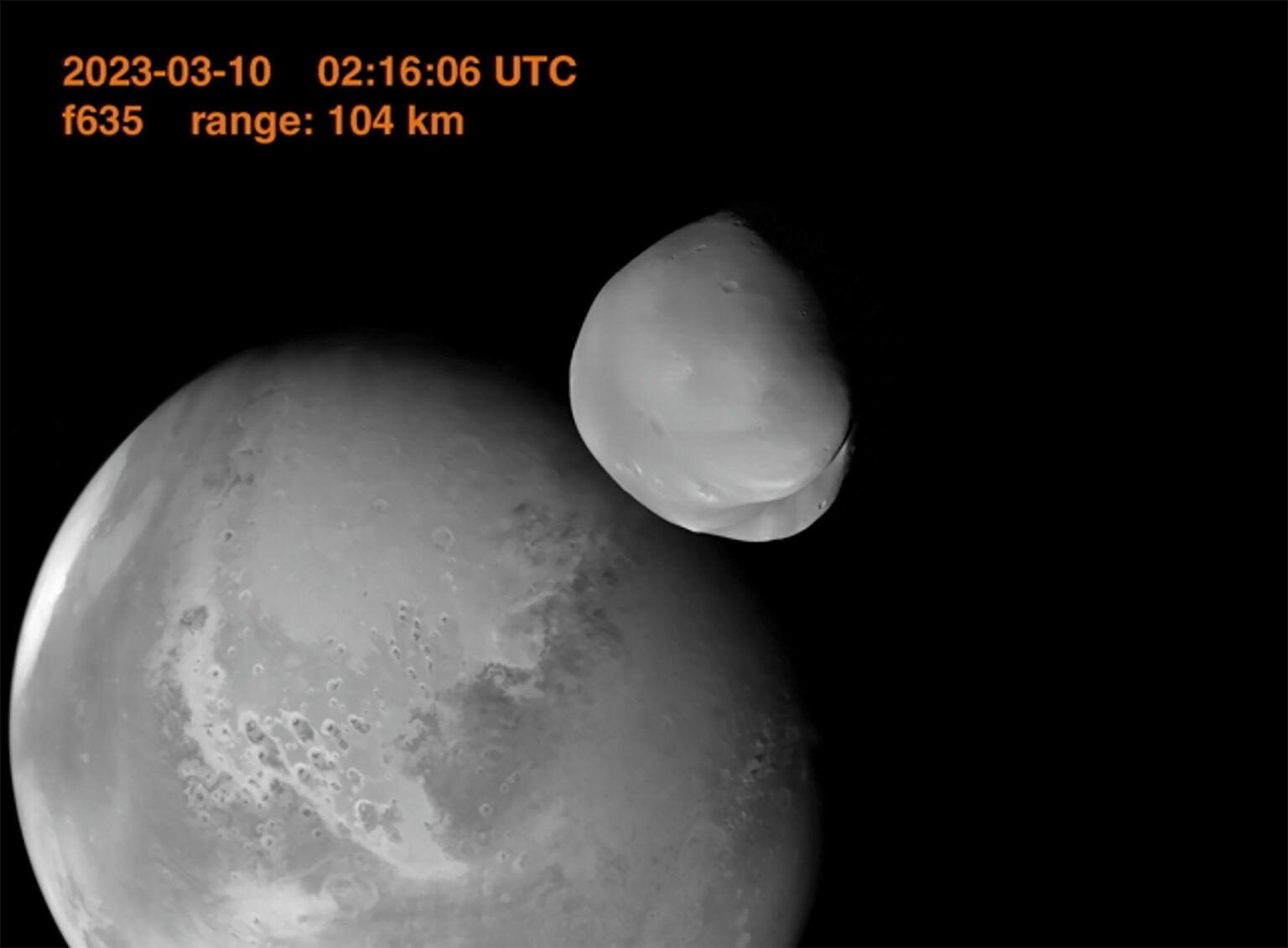The Al-Amal spacecraft flew 100 kilometers from the Mars moon Deimos and photographed it against the background of the red planet. This is the first close-up photo of this celestial body in the last few decades.

Al-Amal photographs Phobos
The spacecraft of the United Arab Emirates “Al-Amal” in March photographed the Mars moon Deimos up close. However, it became known about this only now. Scientists reported this during a scientific conference in Vienna, which was held on April 24.
Al-Amal has been orbiting Mars since 2020. On March 10, 2023, it approached Deimos at a distance of 100 km and photographed it against the background of the planet, getting a beautiful picture. Experts point out that this is the closest flyby of this celestial body in the last few decades.
For the first time, Deimos took a close-up image of NASA’s Viking-2 spacecraft in 1977. Then the pictures were taken from a distance of only 30 km. But since then, for many years, the younger of the two moons of Mars has been photographed only from afar.
What is interesting about Deimos
Scientists were sure that Mars should have two moons long before their discovery. However, it was possible to confirm their existence only in 1877. Since that time, scientists have focused on Phobos. It is larger and much closer to the planet than Deimos. As a result, it is convenient and interesting to observe.
And here is Deimos, rotating at a distance of 23 thousand km from the planet. This is close to the inner part of the Al-Amal orbit, so the research of this moon was conceived from the very beginning as one of the main goals of the mission.
Arab scientists are far from completing their research. However, they can already say with confidence that the theory that Deimos is an asteroid carried away by the gravity of Mars does not correspond to reality. Like Phobos, it was formed at the same time as the planet.
According to phys.org
Follow us on Twitter to get the most interesting space news in time
https://twitter.com/ust_magazine

